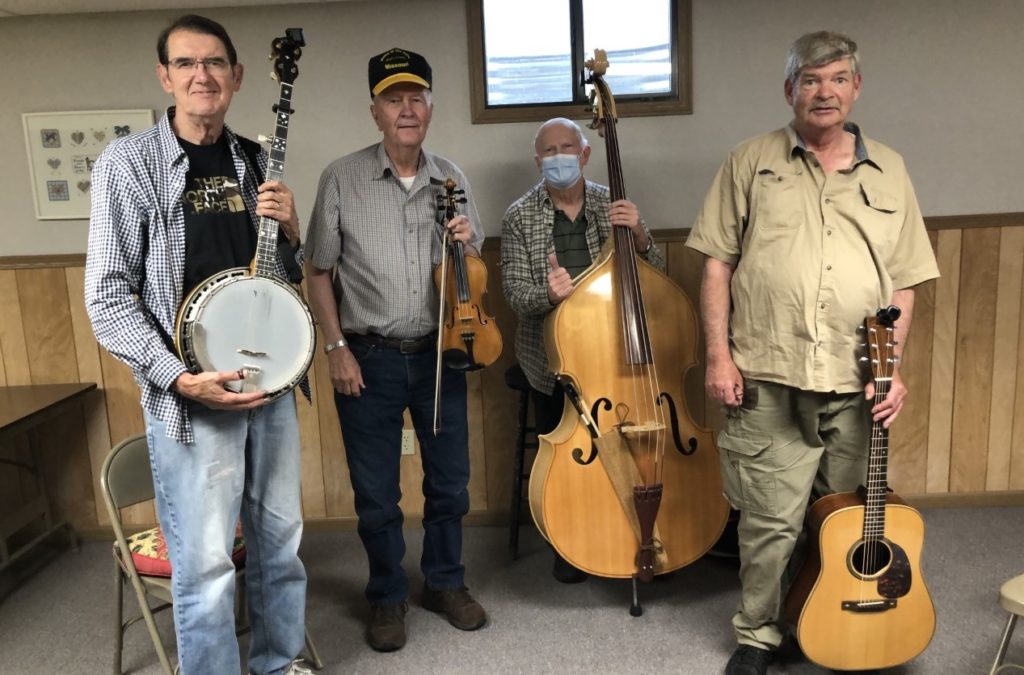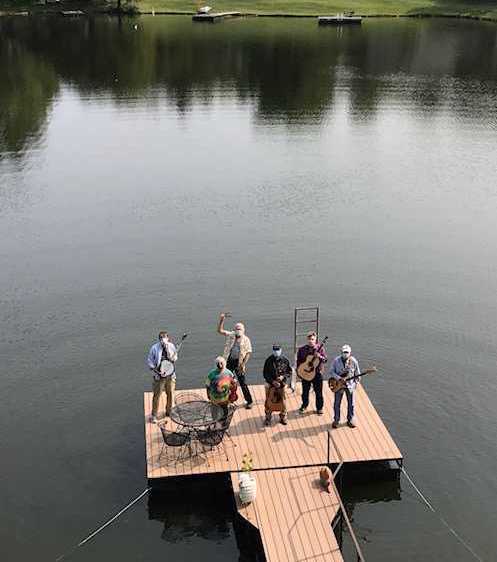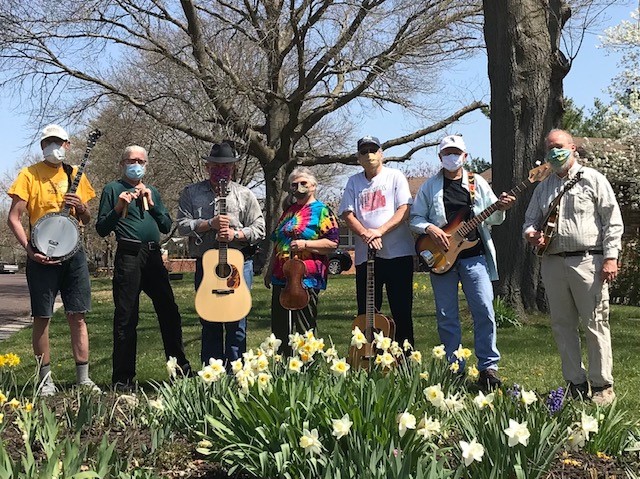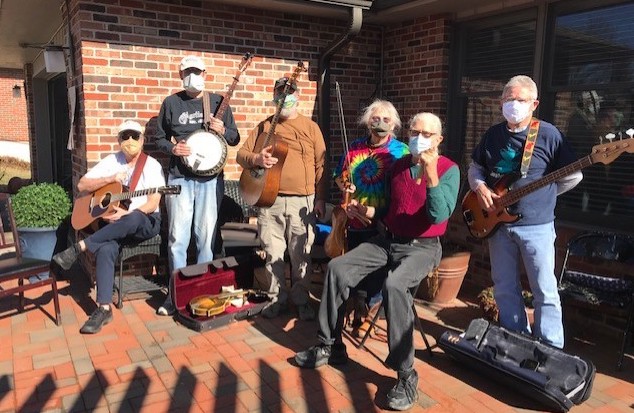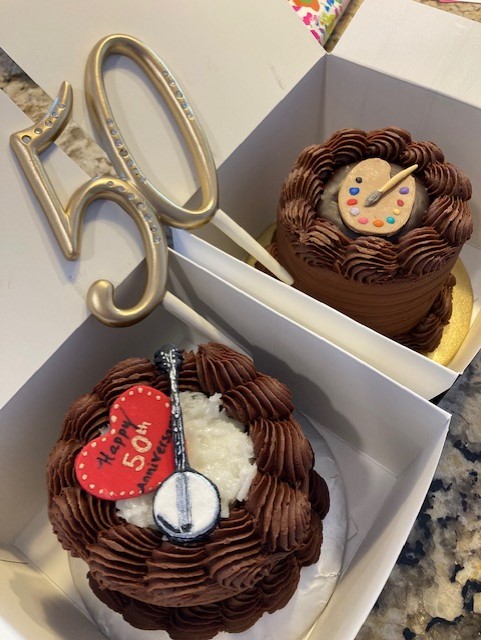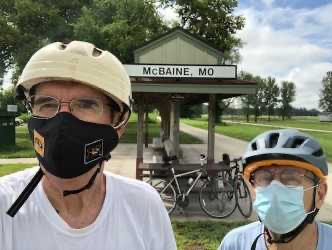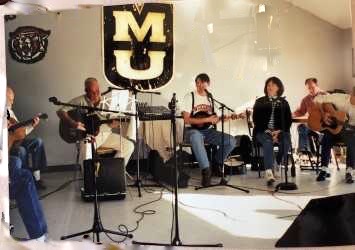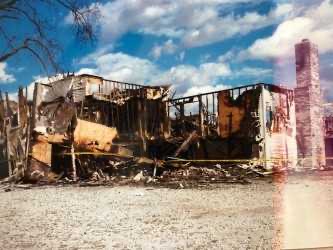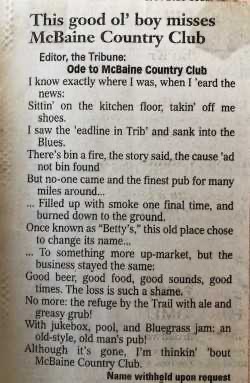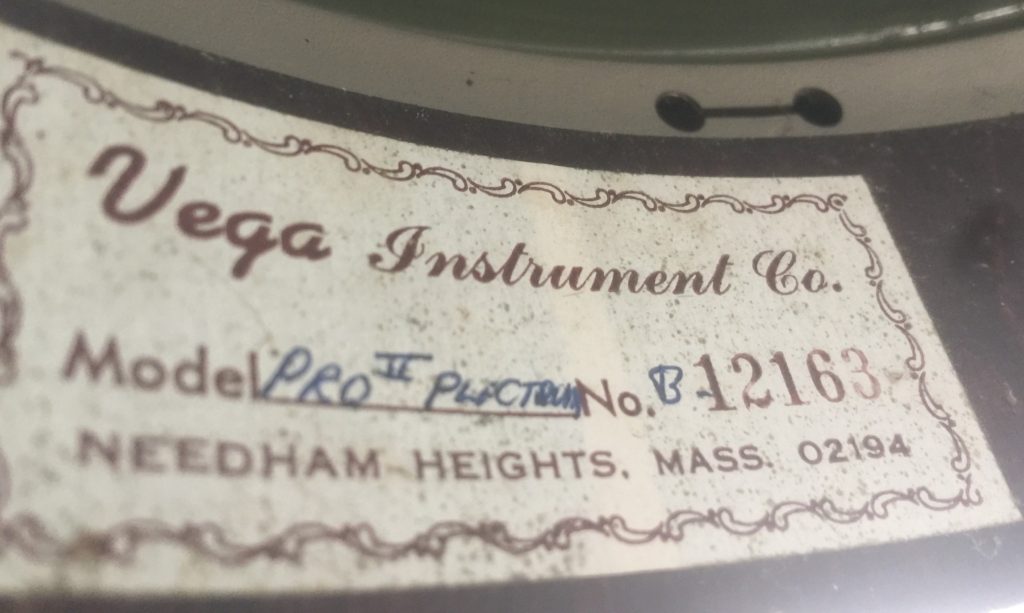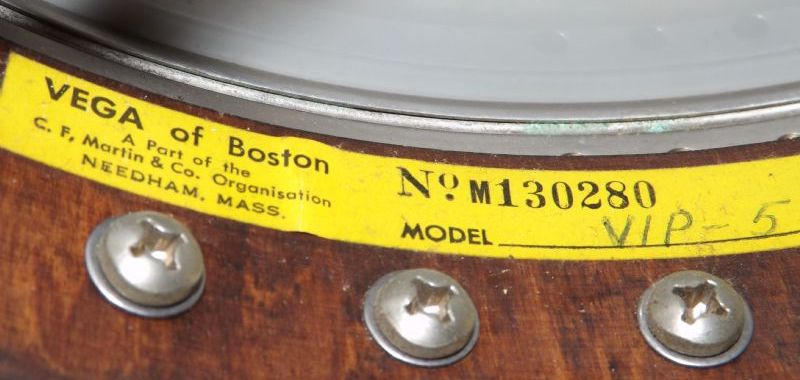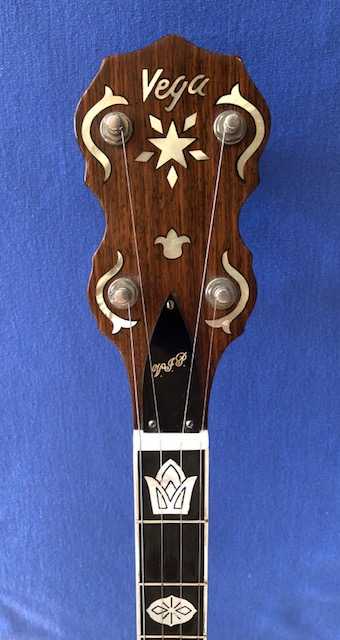After a bleak winter of dreary weather punctuated by a bitter polar vortex, the Rock Island McPickers eagerly made springtime plans last month to reinstate their weekly outdoor Wednesday afternoon jam sessions at the municipal park pavilion. Despite dark clouds gathering in the weather forecast on the eve of the jam, the BRC banjoist resolved to journey to the Ozark picking session rain or shine. The next morning, menacing thunderstorms darkened the online weather radar screen, and overnight torrential rains had submerged the municipal park terrain under water. At the last minute, the jam venue was hurriedly relocated to a nearby church basement. En route to the newly designated picking place, the BRC craftsman’s windshield was briefly pelleted twice by clusters of mini hail. A McPicker mandolinist urgently communicated that high winds were coming soon, while another observer claimed that the sun was coming out again at the churchyard. The temperature began dropping precipitously in mid Missouri, and a worried clogger cautioned that dime-sized hail had peppered her home earlier in the day. By early afternoon, a tornado warning was issued in a neighboring county despite a local observation that the sun had reemerged near the alternate jam venue. Several musicians, not without some trepidation, slowly filtered into the church basement and proceeded to pick and sing while the storm washed over the building`s steeple and moved-on. Mark Twain is said to have advised, “If you don’t like the weather in Missouri, wait five minutes.” Although still overcast later for the post-jam car ride home to the BRC domicile, the gray skies by late afternoon had quieted. Two nights later, record low temperatures visited the Heartland followed by a snowfall.
A few weeks thereafter, the pickers again planned to reinstitute their weekly Wednesday outdoor jam, but the weather prediction indicated thunderstorms all day. The musicians chose to retreat once more to the church basement while ominous cloud banks roiled overhead. The jam session concluded in the late afternoon during which only a single thunderclap was heard. When the pickers got safely home, monsoon-like rains abruptly fell upon the Heartland obscuring the landscape, and a tornado warning was issued south of the Ozarks. By morning, the spillway at the end of the BRC lake was cascading overflow like a hydroelectric plant to bring the brimming water level down. Such is springtime in Missouri.
From the BRC: Like the four guys above have all ready done, get the vax.

